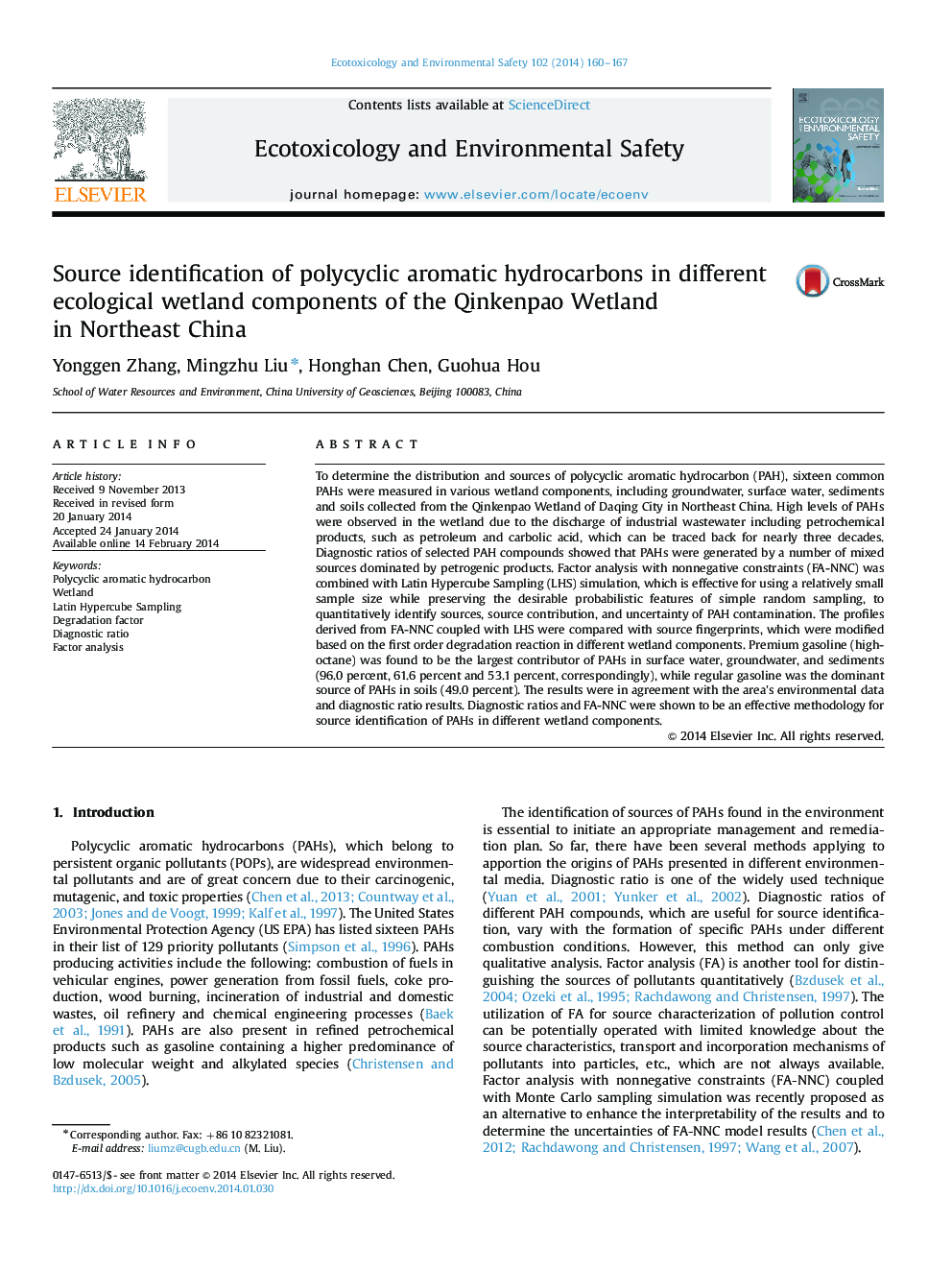| کد مقاله | کد نشریه | سال انتشار | مقاله انگلیسی | نسخه تمام متن |
|---|---|---|---|---|
| 6312184 | 1618961 | 2014 | 8 صفحه PDF | دانلود رایگان |

- LHS was used to determine the uncertainties of PAH contamination.
- The source profiles were modified for different wetland components.
- Diagnostic ratios and FA-NNC were used for source identification of PAHs.
- Sources of various types of wetland component samples were identified.
- Results show that gasoline related sources accounted for the largest contribution.
To determine the distribution and sources of polycyclic aromatic hydrocarbon (PAH), sixteen common PAHs were measured in various wetland components, including groundwater, surface water, sediments and soils collected from the Qinkenpao Wetland of Daqing City in Northeast China. High levels of PAHs were observed in the wetland due to the discharge of industrial wastewater including petrochemical products, such as petroleum and carbolic acid, which can be traced back for nearly three decades. Diagnostic ratios of selected PAH compounds showed that PAHs were generated by a number of mixed sources dominated by petrogenic products. Factor analysis with nonnegative constraints (FA-NNC) was combined with Latin Hypercube Sampling (LHS) simulation, which is effective for using a relatively small sample size while preserving the desirable probabilistic features of simple random sampling, to quantitatively identify sources, source contribution, and uncertainty of PAH contamination. The profiles derived from FA-NNC coupled with LHS were compared with source fingerprints, which were modified based on the first order degradation reaction in different wetland components. Premium gasoline (high-octane) was found to be the largest contributor of PAHs in surface water, groundwater, and sediments (96.0 percent, 61.6 percent and 53.1 percent, correspondingly), while regular gasoline was the dominant source of PAHs in soils (49.0 percent). The results were in agreement with the area׳s environmental data and diagnostic ratio results. Diagnostic ratios and FA-NNC were shown to be an effective methodology for source identification of PAHs in different wetland components.
Journal: Ecotoxicology and Environmental Safety - Volume 102, April 2014, Pages 160-167